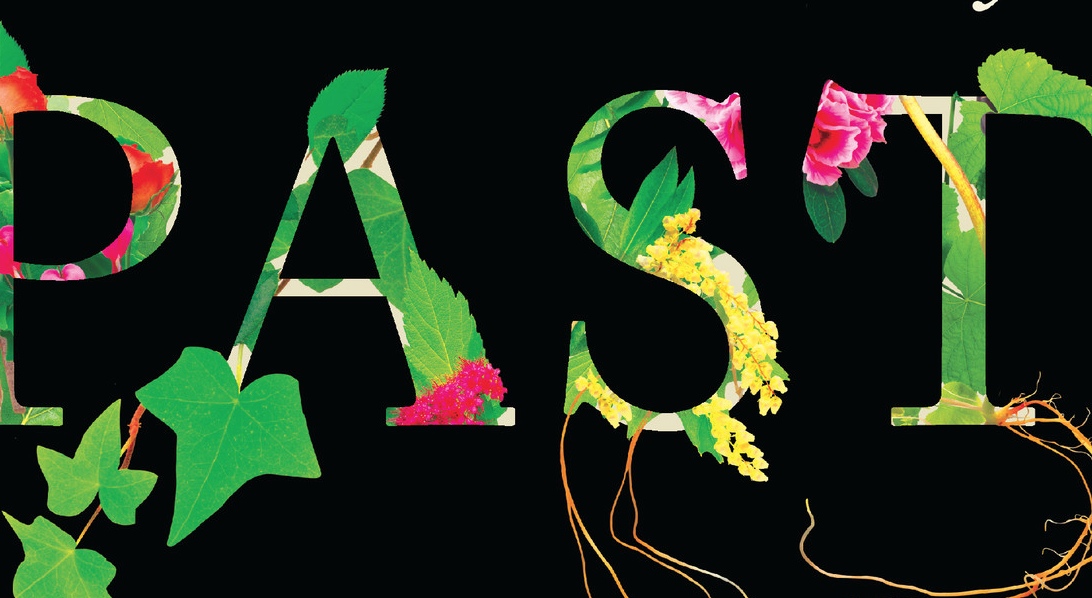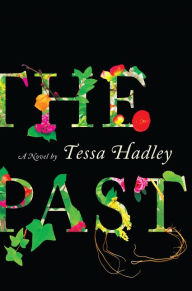The Past

I don’t know how this happened, but I had never, as far as I can remember, read one word by the British writer Tessa Hadley until a week ago when I devoured The Past. Now I wish I could push everything aside and rip right through her other five novels and two collections of stories, rather than attempt to explain what is so extraordinary about this book. It’s almost impossible: Part of the genius of Hadley’s writing lies in her ability to convey feelings and conditions that are supra-verbal. She puts into words that which defies words, capturing the powerful, if ineffable emotional signals that constitute family relations, and carries them onto the page with uncanny precision and with a current of understated humor that is like a buoyant background melody.
It is summer, and four middle-aged siblings, one brother and three sisters, have come to Kington, their late grandparents’ house in the country, the place where they had spent crucial stretches of their childhood. Roland, a university professor, is accompanied by his third wife, Pilar, a lawyer, and Molly, his daughter by his first marriage. Alice, scatty, romantic, and golden-hearted, is a failed actress and veteran of countless affairs. She has brought Kasim, a university student and son of one of her former lovers. Harriet is an athletic loner and lifelong worker on campaigns for justice. Finally, there is Fran, a teacher, accompanied by her two children: Ivy, nine, and Arthur, six. Their father, Fran’s husband, Jeff, a musician, is in the doghouse and has stayed behind in town. The house is decaying, its 200-year-old slate roof leaks and the interior is mottled with damp and mold. The four siblings are here to spend a last, halcyon period together and to decide what to do about the place — probably sell it.
The Past
The Past
By Tessa Hadley
Hardcover $26.99
Adults and children immediately begin to move into their roles: Ivy bossing Arthur around and the two of them traipsing after Kasim and Molly, who, for their part, are bored and sulky until a sexual flame ignites between them. Fran stews about her husband, Jeff’s, misdeeds and finds Alice’s whimsy and determined beneficence maddening. Harriet is withdrawn and stiff, and Roland is imperturbable and ultra-rational, having always preferred “knowing and explaining things” over anything merrier. Pilar, an Argentinean by birth, has a secret trouble.
Thus the plot is set into motion, a most enjoyable one with sharp little surprises, larger shockers, and a long, ingenious flashback to a generation earlier — to the past, with its implications and reverberations. Nonetheless, the plot is still only a place for events and deeds to occur that, in their happening, are transformed into the stuff of consciousness by nimble, penetrating observations. Again and again Hadley captures the furnishings of emotional life, the transient, subtly distinct impressions and feelings we all have at some level but let slip away unpondered.
If Hadley brings preternatural alertness to her characters’ inner worlds, she also portrays the borderlands, territories created by one person’s interaction with another. There are many such provinces, among them those generated by Kasim and Molly, Fran and Alice, and, wildest of them all, Ivy and Arthur. Both children are devious, but Arthur is more slyly so. Ivy likes the big performance and makes a meal of her every, usually concocted grievance. Prima donna of the grand tantrum, on one characteristic occasion she emerges repeatedly “from her bedroom to stand sobbing full-throatedly at the top of the stairs,” while “tucked virtuously into his bed, Arthur watched his sister’s desperate coming and going with a connoisseur’s calm appreciation.”
The children’s world is formed from an amalgam of imagination, misunderstanding, and ignorance, its integrity and vitality secured by secrecy from the adults. Exploring an abandoned cottage, around which much of the action turns, the children find a dead dog and a heap of pornographic magazines; the images, disturbing and incompletely understood, give rise to a fantasy reality controlled by the pictured women, now apotheosized as “the Dead Women.” Later, in bed that night, the children incorporate them into their world of play:
The cave under Ivy’s duvet was some sort of underground hall or temple, and she and Arthur returned there between forays into a dangerous world. They often came back hurt and used magic pine cones for healing — Arthur was particularly moving with his groans and fainting. If the grown-ups heard them playing from downstairs then they took no notice. Ivy snapped out instructions to Arthur. She only mentioned the Dead Women in passing, in an undertone, as if he must know who she meant: they ordered the children to tie their pajama tops around their heads, or they made them bring sacred water in a tooth-mug from the bathroom. The Dead Women weren’t their enemies exactly, and yet she spoke about them warily, in a guarded voice. The fields outside were staring with blue moonlight and the moon-shadows seemed more substantial than daytime ones. They heard the male owl calling and the female’s more subdued response, like a flurry of talk.
— What’s the owl doing? Arthur whispered.
— Killing things, said Ivy matter-of-factly.
As I hope that passage shows, The Past is one of those novels that you want to quote endlessly to demonstrate its perfection of tone and pacing and comic spirit. But there is only one way you will ever grasp its true excellence and that, of course, is by reading it yourself.
Adults and children immediately begin to move into their roles: Ivy bossing Arthur around and the two of them traipsing after Kasim and Molly, who, for their part, are bored and sulky until a sexual flame ignites between them. Fran stews about her husband, Jeff’s, misdeeds and finds Alice’s whimsy and determined beneficence maddening. Harriet is withdrawn and stiff, and Roland is imperturbable and ultra-rational, having always preferred “knowing and explaining things” over anything merrier. Pilar, an Argentinean by birth, has a secret trouble.
Thus the plot is set into motion, a most enjoyable one with sharp little surprises, larger shockers, and a long, ingenious flashback to a generation earlier — to the past, with its implications and reverberations. Nonetheless, the plot is still only a place for events and deeds to occur that, in their happening, are transformed into the stuff of consciousness by nimble, penetrating observations. Again and again Hadley captures the furnishings of emotional life, the transient, subtly distinct impressions and feelings we all have at some level but let slip away unpondered.
If Hadley brings preternatural alertness to her characters’ inner worlds, she also portrays the borderlands, territories created by one person’s interaction with another. There are many such provinces, among them those generated by Kasim and Molly, Fran and Alice, and, wildest of them all, Ivy and Arthur. Both children are devious, but Arthur is more slyly so. Ivy likes the big performance and makes a meal of her every, usually concocted grievance. Prima donna of the grand tantrum, on one characteristic occasion she emerges repeatedly “from her bedroom to stand sobbing full-throatedly at the top of the stairs,” while “tucked virtuously into his bed, Arthur watched his sister’s desperate coming and going with a connoisseur’s calm appreciation.”
The children’s world is formed from an amalgam of imagination, misunderstanding, and ignorance, its integrity and vitality secured by secrecy from the adults. Exploring an abandoned cottage, around which much of the action turns, the children find a dead dog and a heap of pornographic magazines; the images, disturbing and incompletely understood, give rise to a fantasy reality controlled by the pictured women, now apotheosized as “the Dead Women.” Later, in bed that night, the children incorporate them into their world of play:
The cave under Ivy’s duvet was some sort of underground hall or temple, and she and Arthur returned there between forays into a dangerous world. They often came back hurt and used magic pine cones for healing — Arthur was particularly moving with his groans and fainting. If the grown-ups heard them playing from downstairs then they took no notice. Ivy snapped out instructions to Arthur. She only mentioned the Dead Women in passing, in an undertone, as if he must know who she meant: they ordered the children to tie their pajama tops around their heads, or they made them bring sacred water in a tooth-mug from the bathroom. The Dead Women weren’t their enemies exactly, and yet she spoke about them warily, in a guarded voice. The fields outside were staring with blue moonlight and the moon-shadows seemed more substantial than daytime ones. They heard the male owl calling and the female’s more subdued response, like a flurry of talk.
— What’s the owl doing? Arthur whispered.
— Killing things, said Ivy matter-of-factly.
As I hope that passage shows, The Past is one of those novels that you want to quote endlessly to demonstrate its perfection of tone and pacing and comic spirit. But there is only one way you will ever grasp its true excellence and that, of course, is by reading it yourself.
